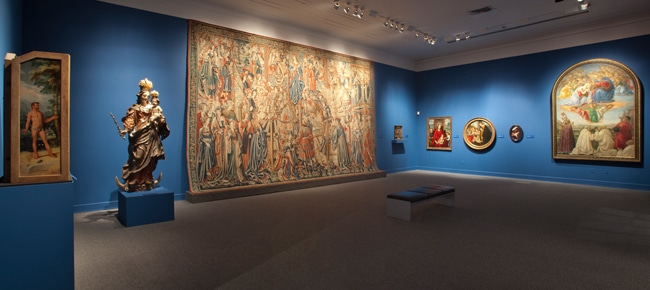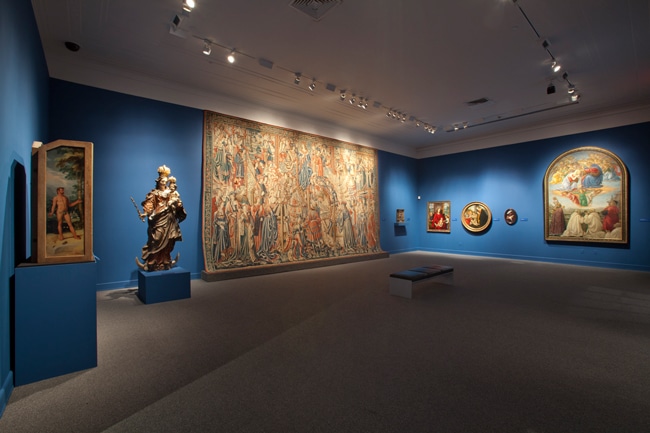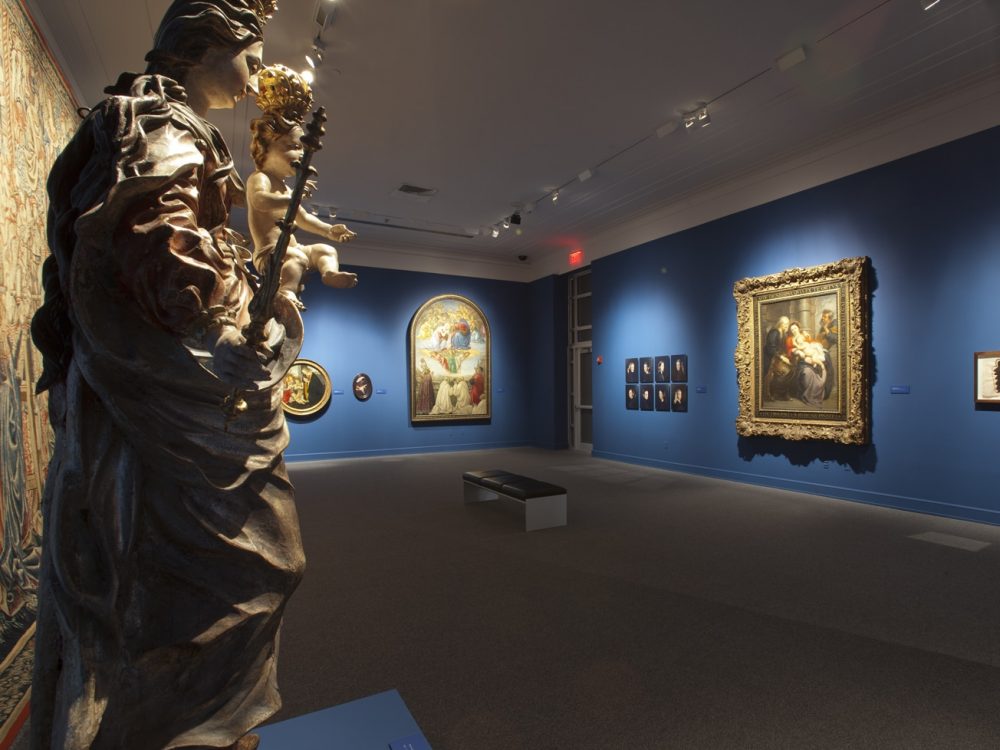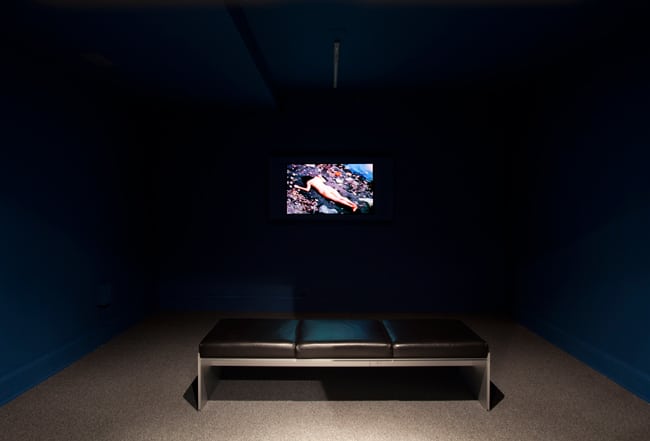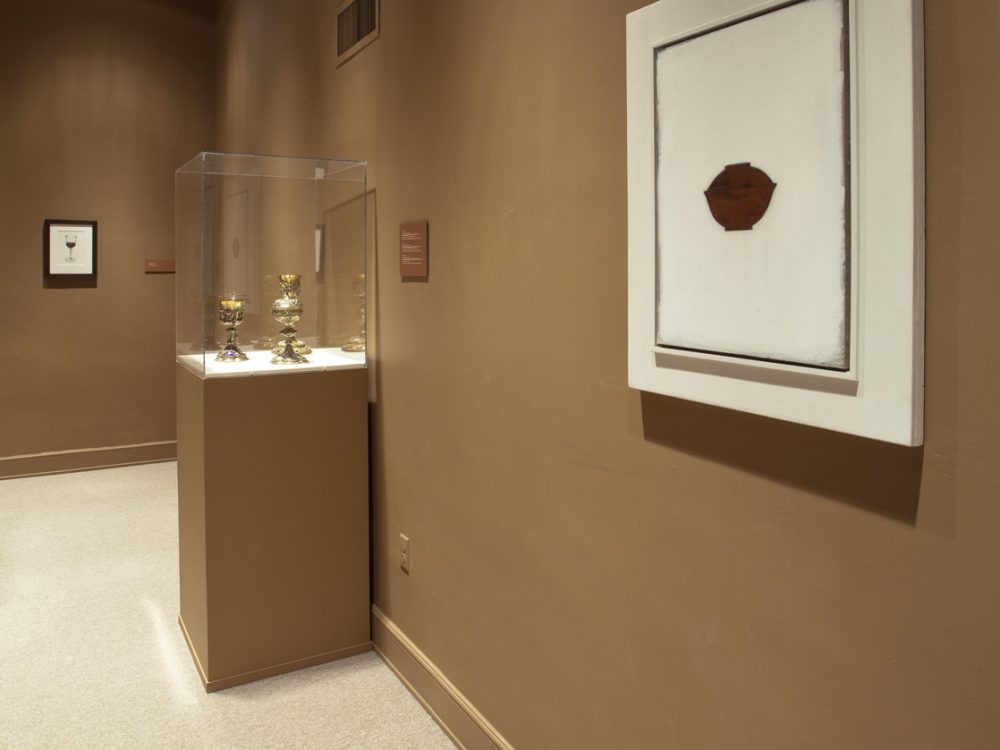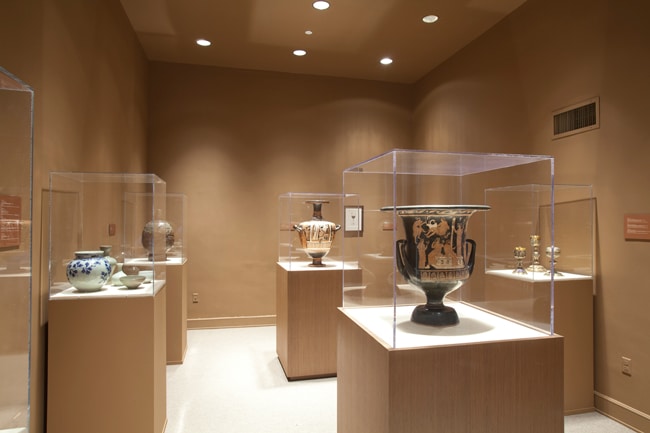selections from the collection in conversation with contemporary works
bass museum of art selections from the collection in conversation with works by janine antoni, michele oka doner, rimma gerlovina & valeriy gerlovin, ana mendieta, anneè olofsson, manny prieres and peter voulkos
adoration and opulence
Throughout the so-called Middle Ages, meaning the 11 – 14th centuries, the appearance and iconography of Christian art in western Europe continued to be heavily influenced by the Byzantine artistic traditions of the eastern or Greek Orthodox church. Around the year 1300, however, painters in central Italy, led by Giotto (1266/67 – 1337) and later Masaccio (1401 – 1428), began to develop a visual vocabulary that was more harmonious with the humanistic ideals of the Greek and Roman literature which had survived from antiquity (thanks primarily to Arab scholars in Spain), and with the equally humanistic aesthetics of modern poets and authors, from Dante and Petrarch to Pico della Mirandola. Affecting depictions of the Virgin Mary and, especially, of the Madonna with her holy Child, Jesus Christ, became at least as popular as representations of the Crucifixion – of Christ dying on the cross in atonement for the sins of all mankind. During the heyday of the so-called Renaissance, the 15th – 17th centuries, painters from Botticelli (1444 – 1510) to Rubens (1577 – 1640) created works, often for public exhibition, which glorified both the humanity of Mary, the adoring mother of an infant, as well as her divinity as the Queen of Heaven, therefore an object of worship in her own right. The bass museum of art’s collection comprises numerous examples of these and related subjects, some of which are displayed in this gallery along with contemporary works of art by Janine Antoni, Ana Mendieta and Anneè Olofsson, which directly or indirectly refer to the madonna, mother earth or the subject of maternity.
The subtext of the present installation is the opulent manner in which artists of the Renaissance portrayed the sacred personages of the Holy Family and the socially superior entourage of a royal court. Looking around the gallery, it is apparent that the palette of Renaissance artists – whether in paint, enamels, or textiles – was conspicuous for its abundance of crimson red and lustrous blue: both were expensive pigments, the former being extracted only from the bodies and scaly shells of female kermes (an insect harvested on evergreen oaks), while the most coveted blue was ultramarine, made from the semi-precious stone, lapis lazuli, which for thousands of years had been mined in the remote river valleys of northeastern Afghanistan. The use of these intense colors immediately signaled to a viewer, whether rich or poor, that an artwork had been created at great expense and therefore was a token of the prestige – wealth and power – of the person who had commissioned it, of the person who had purchased it, or of both. The artwork in the bass collection which far and away would have been the costliest, at the moment of its completion, is the gigantic Flemish tapestry depicting the prelude to a joust, the tournament (1979.129). In terms of both material and labor, the price of such an object would have been unrivalled by that of any European painting until Peter Paul Rubens achieved international celebrity, in the late 1620s, and thus was able to charge unprecedented, astronomical amounts for major works such as the holy family with saint anne (1963.009), likewise on view in this gallery.
-Roger Ward, PhD
Adjunct Curator of Collections
______________________________________________________
ana mendieta (b. cuba, 1948 – 1985)
Throughout her practice, and particularly in the Silueta Series (1973-1980), Ana Mendieta continually and almost ritualistically creates the female silhouette using nature and her own body as media. Her works of art cross the boundaries of land art, performance, film and photography, and many times incorporate more than one of these disciplines at once.
Corazón de roca con sangre, 1975, the video featured in this gallery, as well as silueta de entrañas (la voladora), 1981 and silueta en serie: polvora y yerba, 1977, shown in the gallery next door, focus on the spiritual and physical connections with the earth as a site, but also metaphorically as the giver of life. With the use of leaves, fire, dirt, flowers, grass, sand or blood, the artist delineates the figure of a woman or creates body imprints.
Mary Jane Jacob, an art historian who wrote a book on Ana Mendieta, points out the significance of the mother figure, referring to the Mayan deity Ix Chel, the mother of the Gods (Jacob 1991, p. 14). Many have interpreted Mendieta’s recurring use of this mother figure, and her own female silhouette, as feminist art. Since Mendieta’s work explores many ideas simultaneously including life, death, identity and place, it cannot be categorized as part of one idea or movement.
photos by Silvia Ros
